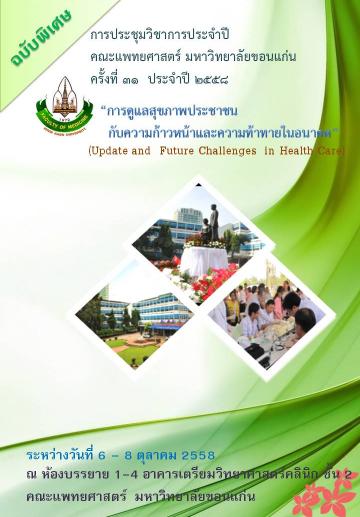Radioactive Iodine Therapy in Childhood Graves Disease
Keywords:
Graves disease, radioiodine therapy, childhood, adolescentAbstract
Background and Objective: Graves disease (GD) is the most common cause of hyperthyroidism in children and adolescents. Treatment consists of medication, radioactive iodine (RAI) therapy and surgery. Currently, radioactive iodine therapy is the first line treatment in many medical centers. This study aim to evaluate the efficacy and long-term follow up safety of RAI therapy in childhood Graves disease.
Materials and Methods: We performed a retrospective review study of 46 medical records of GD patients who had age at onset under 15 years and undergone radioactive iodine therapy in Khon Kaen University Hospital from 1 January 2009 to 31 December 2014.
Results: The total dose of radioactive iodine was 12 mCi/dose. (interquartile range : 9, 15) Hypothyroidism was induced in 33 (71.74%) patients from the first RAI therapy. Thirteen (28.26%) patients required more than one RAI therapy. The average time to induce hypothyroidism after first RAI therapy was 127.50 days (interquartile range: 94.50, 123.00) and the dose of thyroxine for euthyroidism was 1.13 mcg/kg/day (interquatile range : 0.41, 2.02). All patients had improvement of ophthalmopathy and no one had thyroid carcinoma during the follow up period 42.50 months (Interquatile range: 17, 52).
Conclusion: Radioactive iodine therapy is effective and safe in the treatment of children and adolescent Graves disease.




